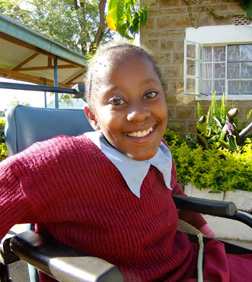I guess I should thank my 6th-grade teacher Mr. Bishop for sending me to the back of the schoolroom for some altercation or another (he and I did not get along) because it was there that I discovered I couldn’t see. First, I thought it was a deliberate attempt by Mr. Bishop to sabotage my education as I couldn’t read what he was putting on the blackboard from the frontier regions of the classroom. I relayed this information to my mother who was very wise, and she promptly took me to an eye doctor. To her credit, she didn’t ask why I had been sent to the back of the school room in the first place. The doctor was able to determine that I was myopic and needed glasses.
 That was the beginning of what was to become a complicated relationship between me and a variety of optometrists’ and ophthalmologists all in a colossal effort to keep me seeing more or less normally. I won’t go into details but some of the circumstances surrounding my eyes became life-changing events.
That was the beginning of what was to become a complicated relationship between me and a variety of optometrists’ and ophthalmologists all in a colossal effort to keep me seeing more or less normally. I won’t go into details but some of the circumstances surrounding my eyes became life-changing events.
About five years ago I had cataract surgery in both eyes, and I was able to get artificial lenses that corrected a number of problems and I found myself seeing 20/20 from about 4 feet in front of my face to infinity without the aid of glasses. This was an interesting development because up until the surgery I could see really close but not far away. I was seeing better than I had ever seen in my life. This allowed me to continue on with my vocation (I made my living flying airplanes) and facilitated my many avocations all of which required pretty good eyesight.
Assistive Technology and medical expertise are available to me allowing me to continue to be a productive member of the society. Most of us take wearing glasses or using hearing aids or other technologies for granted. It’s part of the fabric of life in North America. The vision council of America states “According to the Vision Council of America, approximately 75% of adults use some sort of vision correction. About 64% of them wear eyeglasses, and about 11% wear contact lenses, either exclusively, or with glasses. Over half of all women and about 42% of men wear glasses”.
In many countries, this is not the case. Assistive Technology and the expertise to manage the technology doesn’t exist. Imagine if the 75% of people in North America who currently use eyeglasses or contact lenses were unable to get that technology. A sizable portion of the population would find it difficult to contribute and instead they would become a burden.
In many low resourced countries assistive technology of any kind is either very difficult to come by or non-existent. This takes potentially skilled people out of the workforce and instead puts a burden on families and communities. The Assistive Technology Catalyst Project (AT Catalyst) exists to put existing AT resources together with existing health care providers in low and middle-income countries. The goal is to bring real hope to people who have been living without hope.
Please join us by becoming prayer and financial partners. Go to the AT Catalyst Web Site and while there look around to see what we do then go to the “Give” page where you can sign up for updates in the work we do and have an opportunity to become a financial partner.
To contact us please use the following email address:
This email address is being protected from spambots. You need JavaScript enabled to view it.
Phil Rispin

 Visit us on Facebook
Visit us on Facebook